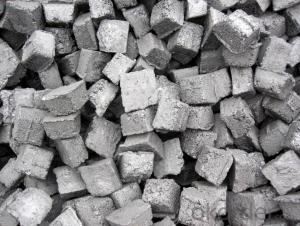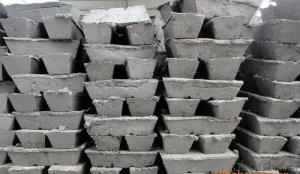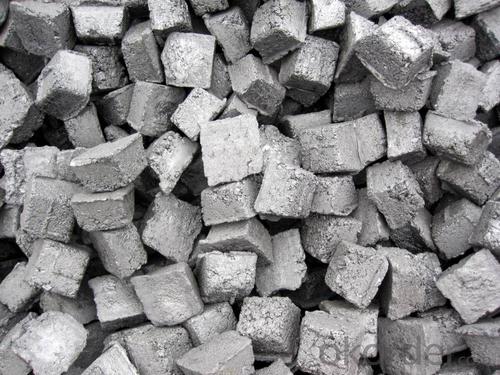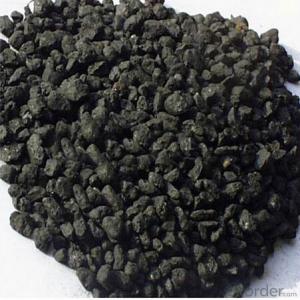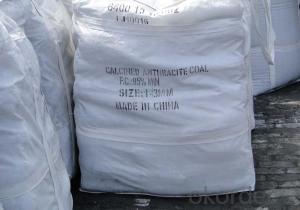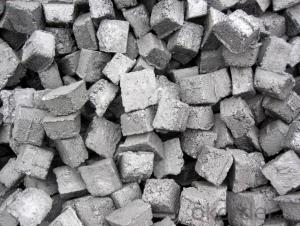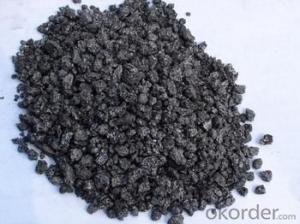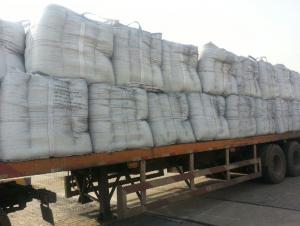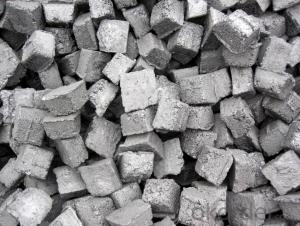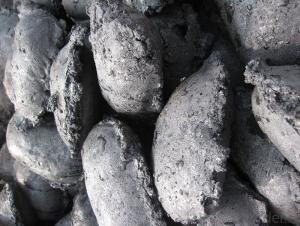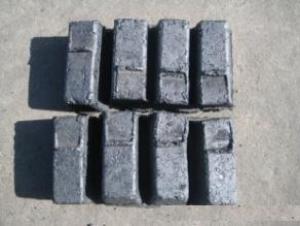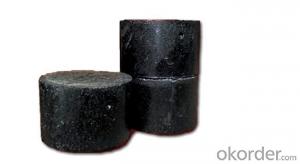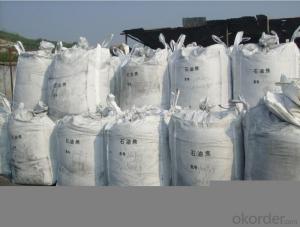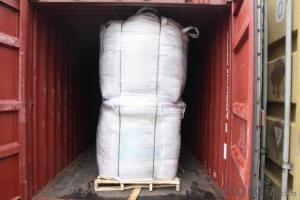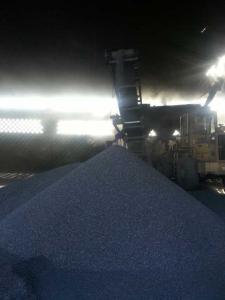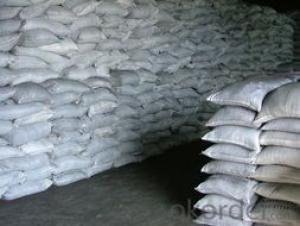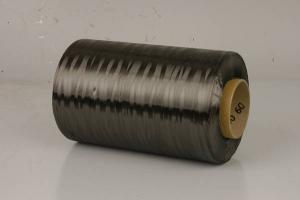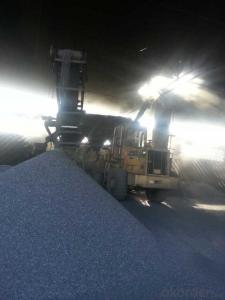Carbon Electrode Paste with Low Ash for Ferroalloy Calcium Carbide Manufacture
- Loading Port:
- Lianyungang
- Payment Terms:
- TT or LC
- Min Order Qty:
- 20 m.t.
- Supply Capability:
- 1000 m.t./month
OKorder Service Pledge
OKorder Financial Service
You Might Also Like
Spcifications
Carbon Electrode Paste with Low Ash 7%
1:carbon eletrode paste
2:for ferroalloy,calcium carbide manufacture
3:HS 3801300000,YB/T5212-1996,ISO9001:2008
Product Description
Carbon Electrode Paste with Low Ash 7%
Carbon Electrode Paste is a self-baking electrode used in submerged arc furnaces for delivering power to the charge mix. Electrode Paste is added to the top of the electrode column in either cylindrical or briquette form. As the paste moves down the electrode column the temperature increase causes the paste to melt and subsequently bake forming a block of electrically conductive carbon. Electrode Paste is essentially a mix of Electrically Calcined Anthracite (ECA) or Calcined Petroleum Coke (CPC) with Coal Tar Pitch.
Carbon Electrode Paste with Low Ash 7%
Detailed Specs
Ash 4.0%max5.0%max 6.0%max7.0% Max9.0% Max11.0% Max
VM 12.0%-15.5%12.0%-15.5%12.0%-15.5%9.5.0%-13.5%11.5%-15.5%11.5%-15.5%
Strength
Compress 18.0Mpa Min17.0Mpa Min15.7Mpa Min19.6Mpa Min19.6Mpa Min19.6Mpa Min
Specific 65μΩm Max68μΩm Max75μΩm Max80μΩm Max90μΩm Max90μΩm Max
Resistance
Bulk Density1.38G/CM3 Min1.38G/CM3 Min1.38G/CM3 Min1.38G/CM3 Min1.38G/CM3 Min1.38G/CM3 Min
Product Picture
Carbon Electrode Paste with Low Ash 7%
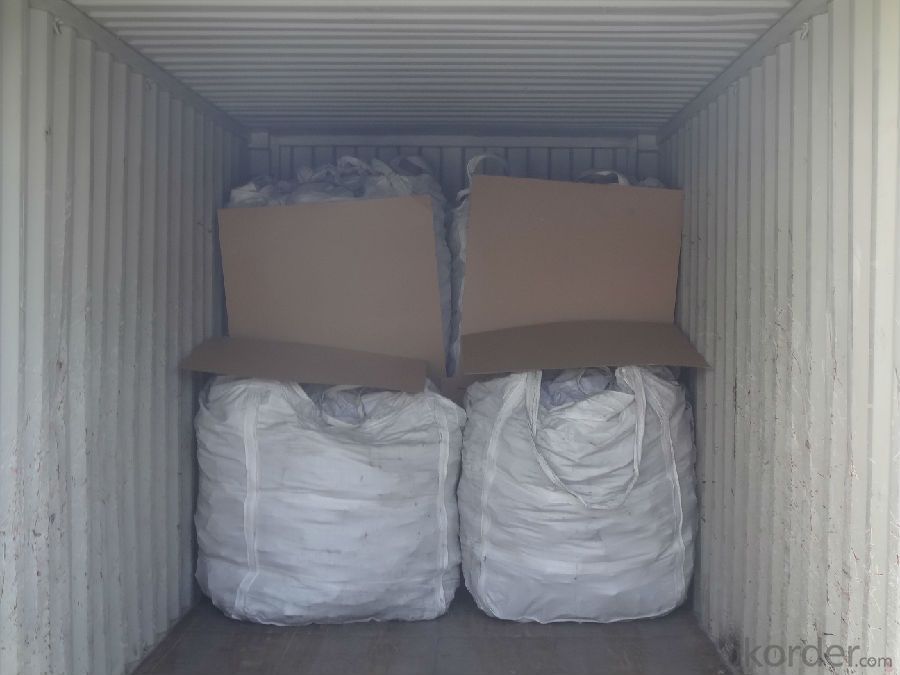
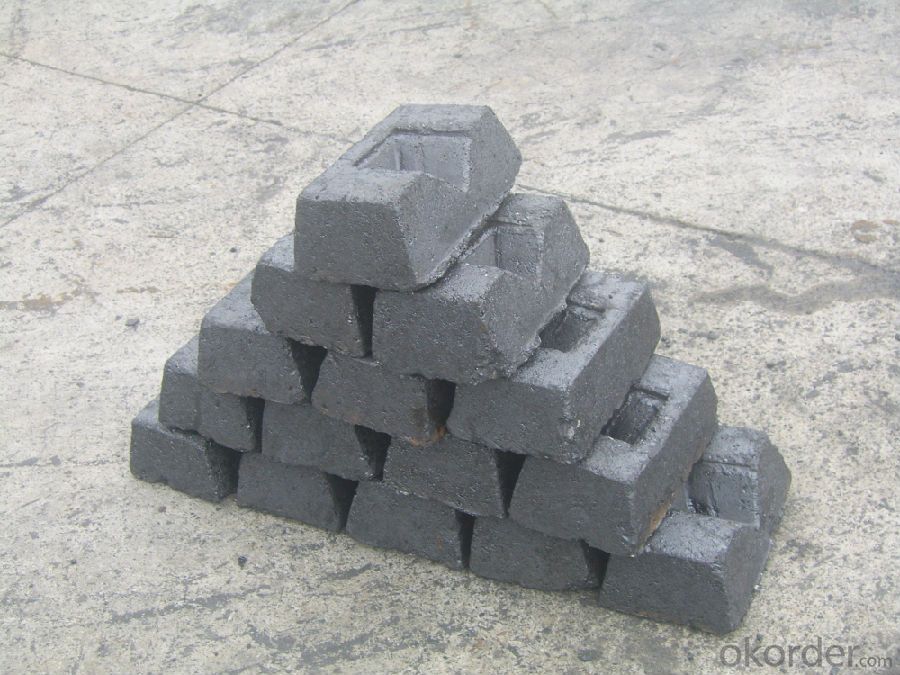
- Q: What are the impacts of carbon emissions on wildlife?
- Carbon emissions have a significant impact on wildlife as it contributes to climate change, leading to habitat loss, changes in migration patterns, and increased vulnerability to disease and extinction. Additionally, the acidification of oceans due to increased carbon dioxide levels affects marine life, disrupting food chains and damaging coral reefs. Overall, carbon emissions pose a grave threat to the survival and well-being of various species.
- Q: How many points can Yongan change for 1 carbon coins?
- Every Thursday at 19:00, carbon points change for carbon coins, 19:30 carbon coins exchange gifts
- Q: What are the challenges and opportunities of transitioning to a low-carbon economy?
- The transition to a low-carbon economy comes with both challenges and opportunities. Firstly, the need for significant changes in infrastructure, technology, and behavior poses a major challenge. This shift requires substantial investments in renewable energy sources, energy-efficient buildings, and sustainable transportation systems. Moreover, it involves moving away from fossil fuels, which have been deeply ingrained in our economies for centuries. Another challenge lies in the potential economic impact on industries heavily reliant on carbon-intensive activities. Sectors like coal mining, oil refining, and traditional manufacturing may experience job losses and economic disruptions. To ensure a fair and inclusive transition for affected workers and communities, careful planning and support are necessary. However, transitioning to a low-carbon economy also opens up numerous opportunities. Firstly, it can drive innovation and create new industries and job prospects. The development and implementation of renewable energy technologies, such as solar and wind power, can stimulate economic growth and generate employment in manufacturing, installation, and maintenance. Additionally, it encourages research and development in clean technologies, leading to breakthroughs and discoveries that can benefit various sectors. Secondly, a low-carbon economy can enhance public health and quality of life. By reducing dependence on fossil fuels, we can mitigate air pollution and its associated health issues, like respiratory problems and cardiovascular diseases. Furthermore, investments in energy-efficient buildings can improve comfort, decrease energy costs, and enhance indoor air quality. Moreover, transitioning to a low-carbon economy can bolster energy security and diminish geopolitical tensions. By diversifying energy sources and reducing reliance on fossil fuel imports, countries can enhance their resilience to price fluctuations and conflicts. This shift also promotes energy independence and reduces the need for costly military interventions in resource-rich regions. Lastly, transitioning to a low-carbon economy is crucial for combatting climate change and safeguarding the environment. By curbing greenhouse gas emissions, we can mitigate the impacts of global warming, such as extreme weather events, rising sea levels, and disruptions to ecosystems. This transition enables us to preserve biodiversity, protect natural resources, and create a sustainable future for generations to come. In conclusion, the transition to a low-carbon economy presents challenges like infrastructure changes, economic disruptions, and job losses. However, it also offers opportunities for innovation, job creation, improved public health, enhanced energy security, and environmental protection. With careful planning, collaboration, and support, these challenges can be overcome, and the opportunities can be maximized, leading to a more sustainable and prosperous future.
- Q: What is the role of carbon in the formation of diamonds?
- The role of carbon in the formation of diamonds is essential, as diamonds are composed entirely of carbon atoms arranged in a crystal lattice structure. The extreme heat and pressure deep within the Earth's mantle cause carbon atoms to bond tightly together, forming the unique structure of a diamond. Without carbon, diamonds would not exist.
- Q: How does deforestation contribute to carbon dioxide levels in the atmosphere?
- Deforestation plays a significant role in contributing to increased carbon dioxide levels in the atmosphere. Trees act as natural carbon sinks, absorbing carbon dioxide during photosynthesis and storing it in their trunks, branches, and leaves. When forests are cleared or burned down for various purposes such as agriculture, logging, or urbanization, the stored carbon is released back into the atmosphere as carbon dioxide. The removal of trees directly leads to a reduction in the planet's capacity to absorb carbon dioxide, resulting in an imbalance in the carbon cycle. Additionally, deforestation disrupts the carbon cycle by inhibiting the process of photosynthesis, which is essential for converting carbon dioxide into oxygen and organic compounds. Moreover, deforestation indirectly contributes to increased carbon dioxide levels in the atmosphere through the decomposition of organic matter. When trees are cut down or burned, the stored carbon they contain is released into the atmosphere as carbon dioxide, intensifying greenhouse gas emissions. Furthermore, deforestation also impacts the water cycle, leading to drier conditions in the affected areas. This dries out the soil, making it less suitable for plant growth and reducing the potential for carbon absorption through reforestation efforts. The cumulative effect of deforestation on carbon dioxide levels is significant. According to studies, deforestation accounts for approximately 10-15% of global carbon emissions, making it one of the leading contributors to climate change. The increase in atmospheric carbon dioxide levels, along with other greenhouse gases, contributes to the greenhouse effect, trapping heat in the atmosphere and causing global warming. Addressing deforestation is crucial in mitigating climate change and reducing carbon dioxide levels. Implementing sustainable forestry practices, promoting reforestation efforts, and protecting existing forests are essential steps in preserving carbon sinks and reducing greenhouse gas emissions.
- Q: How does carbon affect the formation of earthquakes?
- Carbon does not directly affect the formation of earthquakes. Earthquakes are primarily caused by the movement of tectonic plates, which are large sections of the Earth's crust that float on the semi-fluid layer below. These plates can collide, slide past each other, or move apart, causing stress to build up along the plate boundaries. When the stress becomes too great, it is released in the form of an earthquake. However, carbon can indirectly impact the occurrence of earthquakes through its role in the Earth's carbon cycle and its contribution to climate change. Carbon dioxide (CO2) is a greenhouse gas that is released into the atmosphere through various human activities, such as burning fossil fuels. This excess CO2 in the atmosphere leads to global warming and climate change. Climate change can have several effects on the Earth's crust, some of which may indirectly influence seismic activity. For example, the melting of glaciers and polar ice caps due to global warming can lead to changes in the distribution of mass on the Earth's surface. This redistribution of mass can cause the Earth's crust to adjust, leading to increased stress along fault lines and potentially triggering earthquakes. Additionally, changes in precipitation patterns and the hydrological cycle caused by climate change can affect groundwater levels and pore pressure within rocks. These changes in water content can alter the strength and stability of fault lines, potentially making them more prone to slipping and causing earthquakes. It is important to note that the direct impact of carbon on earthquake formation is minimal compared to the primary factors such as plate tectonics. However, the relationship between carbon emissions, climate change, and seismic activity is an area of ongoing research and scientific investigation.
- Q: How does carbon contribute to the flavor of food?
- Carbon contributes to the flavor of food through the process of caramelization, which occurs when sugars break down and react with heat. This reaction produces a variety of flavor compounds, including those that give foods a rich, nutty, or sweet taste. Additionally, carbon is an essential component of organic molecules like amino acids and fats, which play a crucial role in creating the overall flavor profile of different foods.
- Q: How does carbon impact the formation of smog?
- Carbon plays a significant role in the formation of smog, particularly in the form of carbon monoxide (CO) and volatile organic compounds (VOCs). When fossil fuels are burned, such as in vehicle engines or power plants, they release carbon monoxide into the atmosphere. Carbon monoxide is a colorless and odorless gas that can react with other pollutants in the presence of sunlight to form ground-level ozone, a key component of smog. Furthermore, carbon-based compounds known as volatile organic compounds (VOCs) are also emitted from various sources, including industrial processes, gasoline vapors, and chemical solvents. These VOCs can undergo chemical reactions in the presence of nitrogen oxides and sunlight to create ground-level ozone as well. Both carbon monoxide and VOCs contribute to the formation of smog by reacting with nitrogen oxides (NOx) in the presence of sunlight. This chemical reaction forms ground-level ozone, which is a primary component of smog. Ozone is harmful to human health and the environment, and its formation is exacerbated by the presence of carbon emissions. Reducing carbon emissions is crucial to mitigating the formation of smog. Transitioning to cleaner and more sustainable sources of energy, such as renewable energy, can help decrease the amount of carbon released into the atmosphere. Additionally, implementing stricter emissions standards for vehicles and industrial processes can also contribute to reducing carbon emissions and consequently limit the formation of smog.
- Q: What is carbon nanotube?
- Carbon nanotubes are cylindrical structures made up of carbon atoms arranged in a unique hexagonal lattice pattern. They are incredibly small, with diameters on the nanometer scale (about 1 billionth of a meter) and lengths that can range from a few nanometers to several centimeters. Carbon nanotubes possess remarkable properties that make them highly attractive for a wide range of applications. They are incredibly strong, with tensile strength that exceeds that of any other known material, making them ideal for use in structural composites. They also have excellent electrical conductivity, thermal conductivity, and are chemically stable, which makes them useful in fields such as electronics, energy storage, and catalysis. There are two main types of carbon nanotubes: single-walled nanotubes (SWNTs) and multi-walled nanotubes (MWNTs). Single-walled nanotubes consist of a single layer of carbon atoms rolled into a tube, while multi-walled nanotubes consist of multiple concentric layers of carbon atoms. The arrangement of carbon atoms and the diameter of the tube determine the properties of the nanotube. Carbon nanotubes have the potential to revolutionize various industries due to their unique properties. They are being explored for applications in electronics, where they can be used as high-performance transistors, interconnects, and sensors. They also hold promise in the field of energy storage, as they can be used in batteries and supercapacitors that have higher energy densities and faster charging rates. Additionally, their high surface area and unique chemical properties make them suitable for catalytic applications, such as water purification and chemical synthesis. Despite their immense potential, there are still challenges to overcome in the large-scale production and commercialization of carbon nanotubes. However, ongoing research and development efforts continue to push the boundaries of their applications, making carbon nanotubes an exciting field of study with significant future possibilities.
- Q: What is carbon monoxide poisoning?
- Carbon monoxide poisoning is a potentially deadly condition that occurs when an individual inhales or is exposed to high levels of carbon monoxide gas. Carbon monoxide is a colorless, odorless, and tasteless gas that is produced from the incomplete combustion of carbon-based fuels such as gasoline, natural gas, coal, and wood. When carbon monoxide is inhaled, it enters the bloodstream and binds to hemoglobin, the molecule responsible for carrying oxygen throughout the body. This binding process prevents oxygen from being adequately delivered to vital organs and tissues, leading to oxygen deprivation or hypoxia. The symptoms of carbon monoxide poisoning can vary depending on the level and duration of exposure, but they often resemble those of the flu, including headache, dizziness, weakness, nausea, vomiting, confusion, and loss of consciousness. Prolonged exposure to high levels of carbon monoxide can result in severe brain damage, organ failure, and even death. It is crucial to take immediate action if carbon monoxide poisoning is suspected. This includes removing oneself from the source of exposure, seeking fresh air, and contacting emergency services for medical attention. Additionally, it is essential to identify and address the source of carbon monoxide, such as faulty heating systems, blocked chimneys, or malfunctioning appliances, to prevent further exposure and ensure the safety of the environment. Prevention is key in avoiding carbon monoxide poisoning. Regularly maintaining and inspecting fuel-burning appliances, installing carbon monoxide detectors in homes and buildings, and ensuring proper ventilation are vital steps to minimize the risk of exposure. Education and awareness about the dangers of carbon monoxide and the necessary precautions can help save lives and protect individuals from this silent killer.
Send your message to us
Carbon Electrode Paste with Low Ash for Ferroalloy Calcium Carbide Manufacture
- Loading Port:
- Lianyungang
- Payment Terms:
- TT or LC
- Min Order Qty:
- 20 m.t.
- Supply Capability:
- 1000 m.t./month
OKorder Service Pledge
OKorder Financial Service
Similar products
Hot products
Hot Searches
